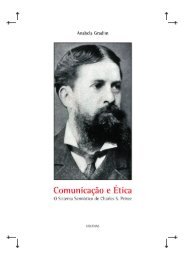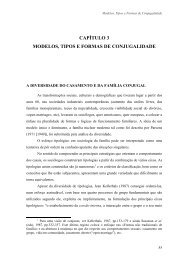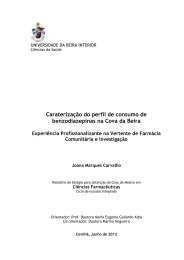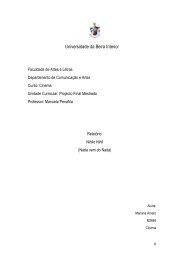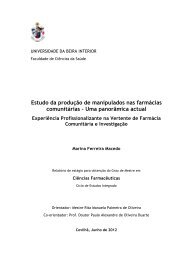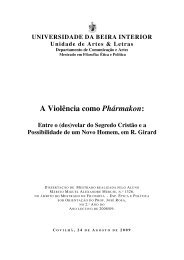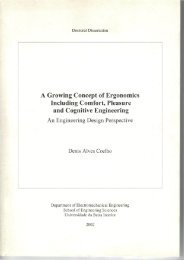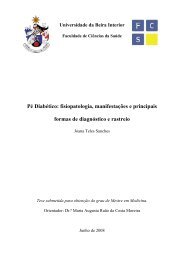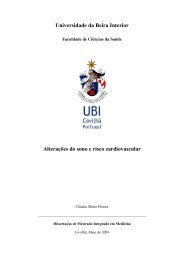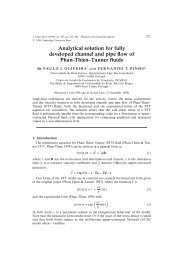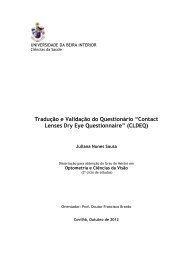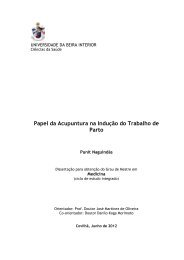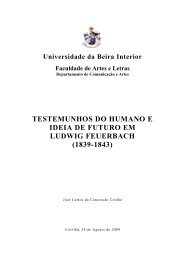Tese_Tânia Vieira.pdf - Ubi Thesis
Tese_Tânia Vieira.pdf - Ubi Thesis
Tese_Tânia Vieira.pdf - Ubi Thesis
You also want an ePaper? Increase the reach of your titles
YUMPU automatically turns print PDFs into web optimized ePapers that Google loves.
Chapter IV – Conclusions and Future Perspectives<br />
AgNPs produced by the reduction with C 6 H 8 O 6 are the preferred ones, due to their low MIC<br />
against E. coli and the absence of toxic effects for human osteoblast cells. The supernatants<br />
resulting from the washing of the several nanoparticles were also put in contact with cells, in<br />
order to evaluate their cytotoxicity. The supernatants of all the produced nanoparticles were<br />
extremely toxic for human osteoblast cells. Hereby, particles’ washing decreased the toxicity of<br />
the nanoparticles for human cells.<br />
Chitosan/dextran nanoparticles combined with the AgNPs produced by the reduction with<br />
C 6 H 8 O 6 , would be a good choice for coating an orthopedic implant to avoid the bacterial<br />
colonization, i. e., the biofilm formation. Moreover, these particles may also be valuable<br />
candidates to be applied in skin regeneration, since AgNPs also possess an anti-inflammatory<br />
effect. Additionally, chitosan/dextran nanoparticles are currently used as drug delivery systems<br />
due their high efficiency in drug encapsulation. Therefore, it would be interesting to study the<br />
incorporation of growth factors in these systems for bone and skin regeneration. In a near future,<br />
in vivo studies will allow to validate the results herein produced.<br />
51



